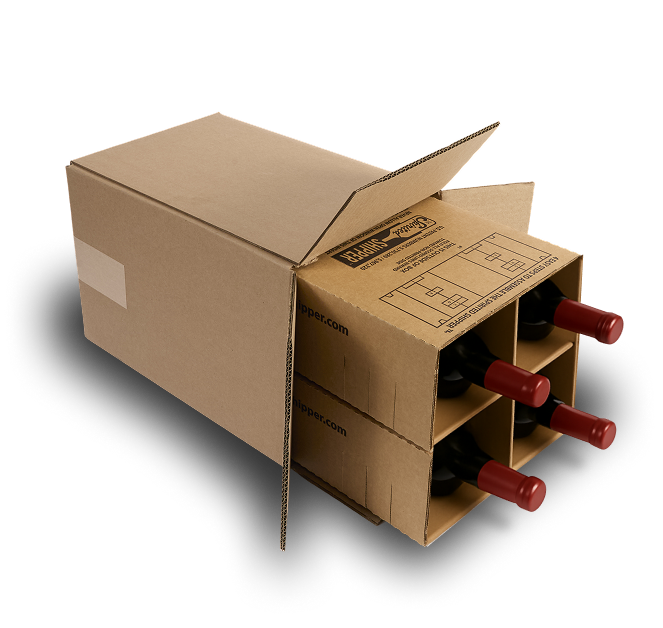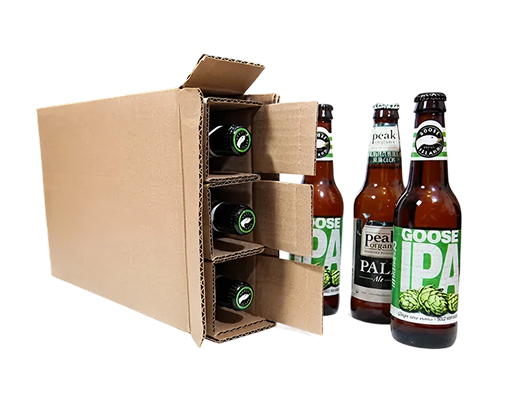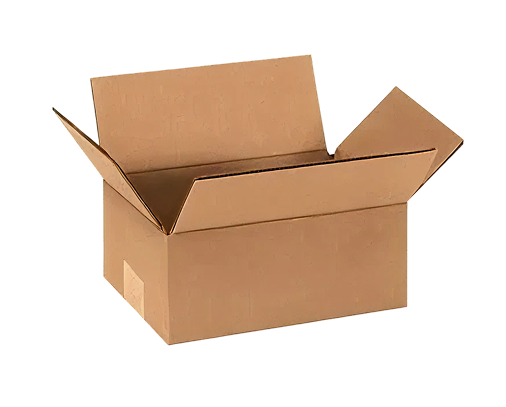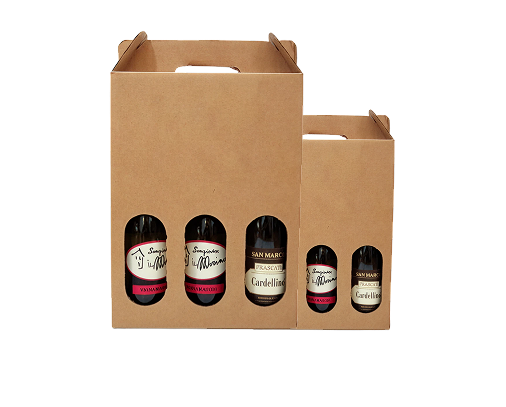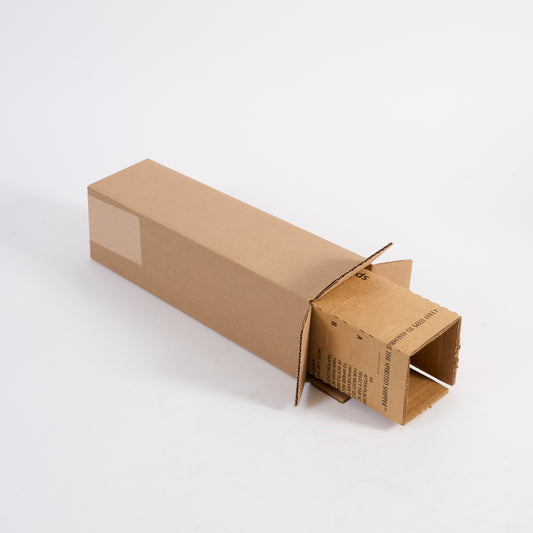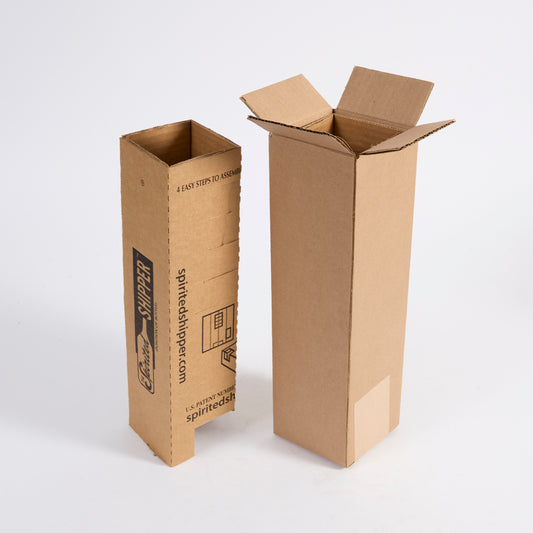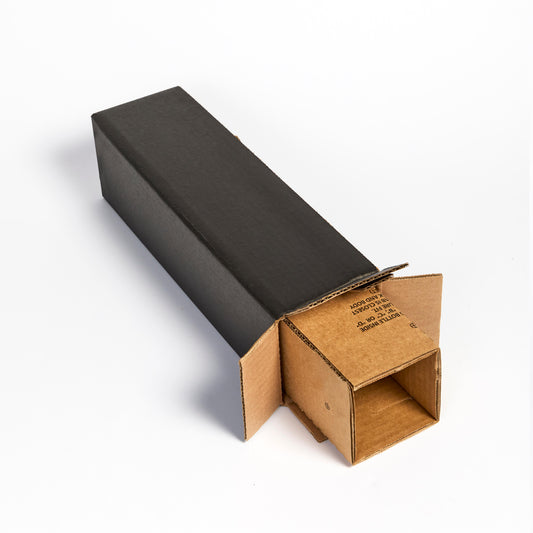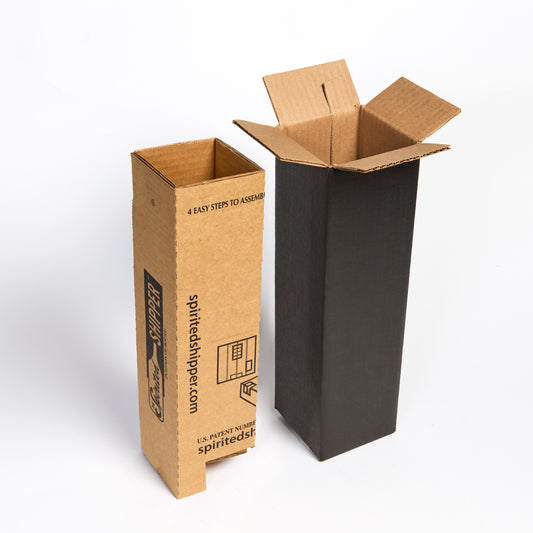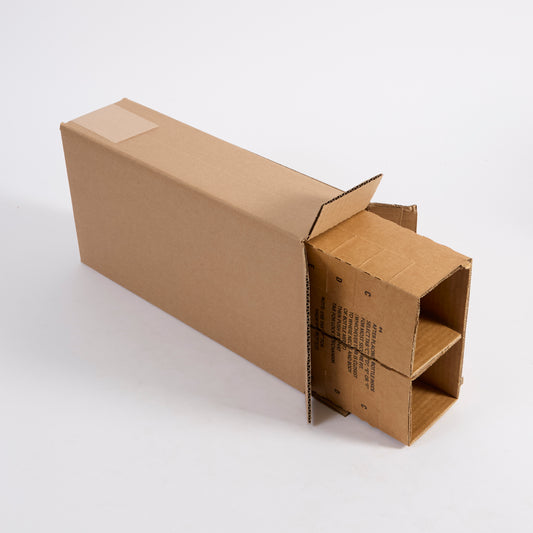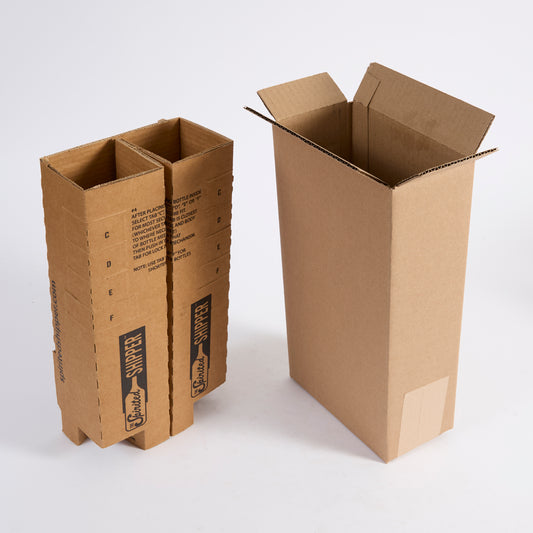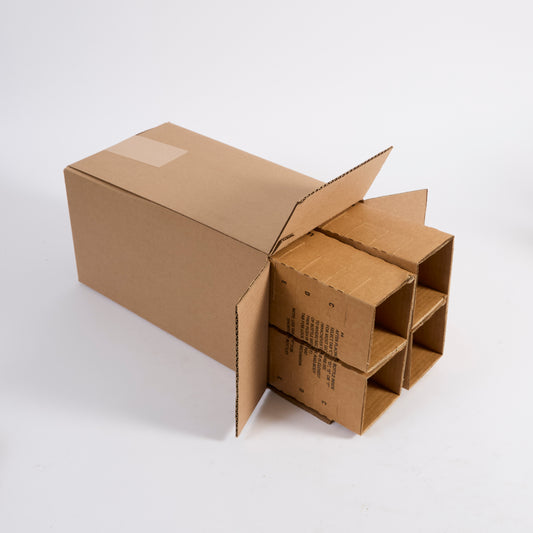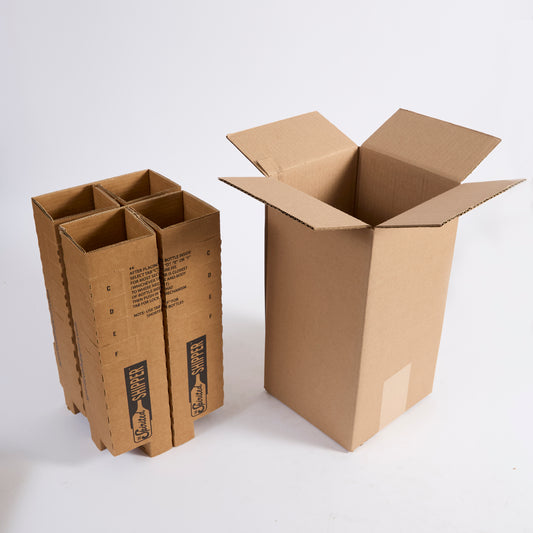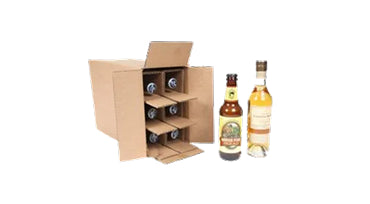Cost-effective wine and liquor shipping boxes for better value than big-brand options.

Affordable

Versatile
Safely ships wine, beer, spirits, or nearly any type of glass bottle.

Crash-Tested and Safe
Strong, multi-layered boxes with protective inserts for secure glass bottle transit.

Customizable
Millions of bottles shipped from thousands of wineries, breweries, wine retailers, and more.
Shop By Category
Cardboard Shipping Boxes with Inserts
- Innovative insert-and-box system designed for maximum protection
- Original patented design - often imitated, never matched
- Perfect for shipping wine and other glass bottles securely
- Trusted by professionals for durability and performance
- 375 ML (Small), 750 ML (Medium), Magnum (Large)
Corrugated Boxes
- Heavy-duty corrugated boxes for wine, spirits, and glass bottles
- Manufactured in-house with over 30 years of proven quality
- Patented materials ensure strength, reliability, and eco-consciousness
- Bulk-friendly pricing with consistent performance
- Boxes Only, Shipping inserts only
Wine Totes
- Durable wine carriers made from ECT32 rated Kraft corrugated cardboard
- Holds standard 750ml bottles securely with built-in handle
- Optional pop-out windows to showcase bottle labels
- More protective and easy-to-assemble, no tape required
- 750 ML (Medium), Magnum (Large)
Shop Wine & Bottle Shipping Boxes
Shipping Options
See Below For Our Shipping Services
- Cost:
- Delivery Time:
- Service Days:
- Delivery Area:
- MIN / MAX Orders:
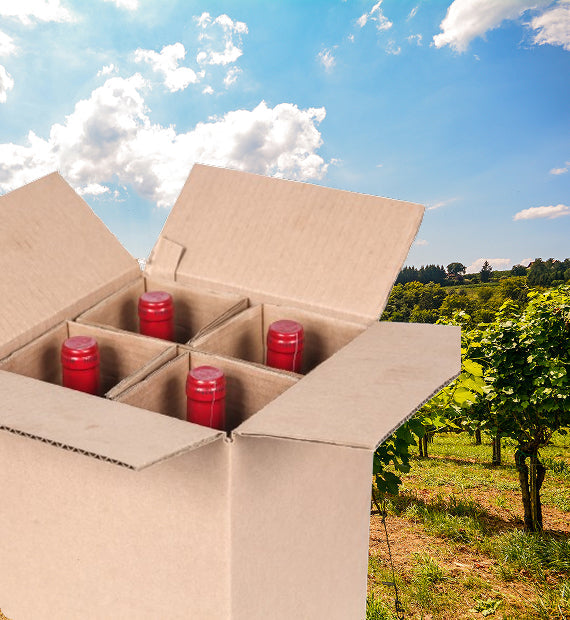
Quality Testing
Our patented wine shipping boxes undergo rigorous quality testing
All our wine and spirit shipping boxes are original and patented, and we take quality and safety standards seriously. Our manufacturing process includes FedEx package-testing to ensure consistent strength and durability. Because of this, these high-quality shipping products guarantee safe shipping.
The Spirited Shipper bottle shipper and insert system protects your bottles from getting crushed or opened. With our products, your bottles will be safer than they would be if you hand-delivered them yourself. In addition, our carefully-designed cardboard shipping boxes allow for airflow so that your labels won’t be moisture damaged.

Eco Friendly
Our wine shipping boxes are good for the environment.
Our boxes are made from fully recycled material, and are recyclable when discarded. They are also durable. Therefore you can reuse them many times, which saves you money and reduces waste.
Other companies use styrofoam, a material that releases toxic chemicals, for their wine shippers. We don’t believe in using styrofoam because it harms the planet and doesn’t degrade for many years. It also doesn’t hold up like a wine shipping box should. Instead, we use corrugated cardboard because this just makes more sense for the Earth, the wine, and your wallet.

